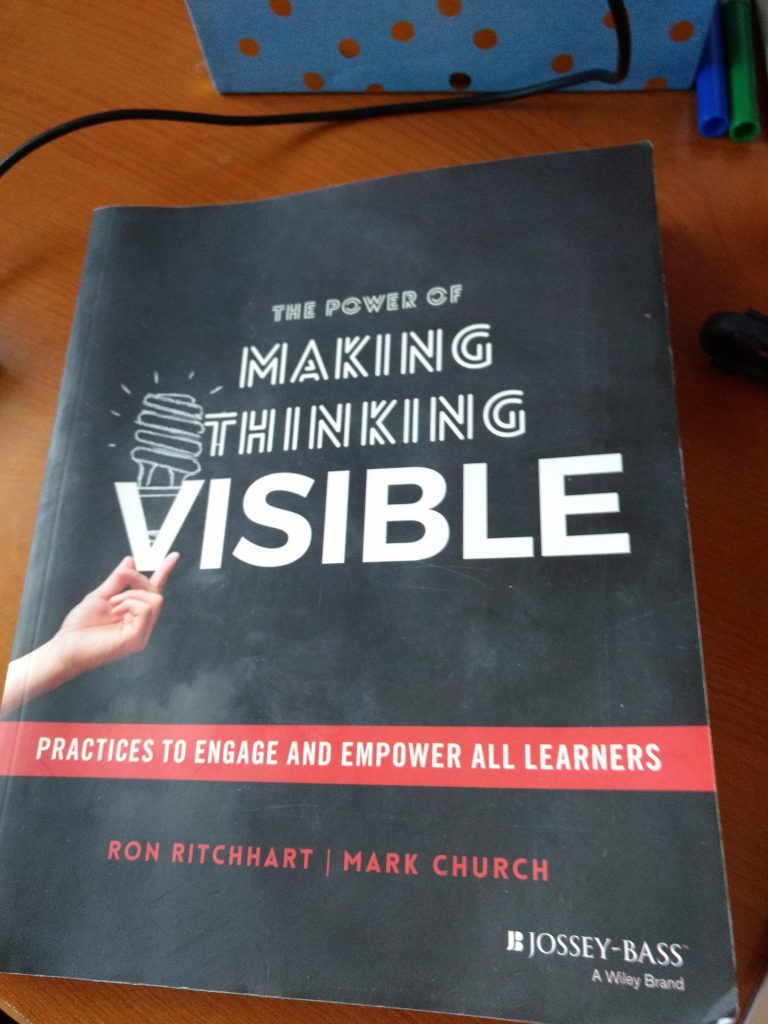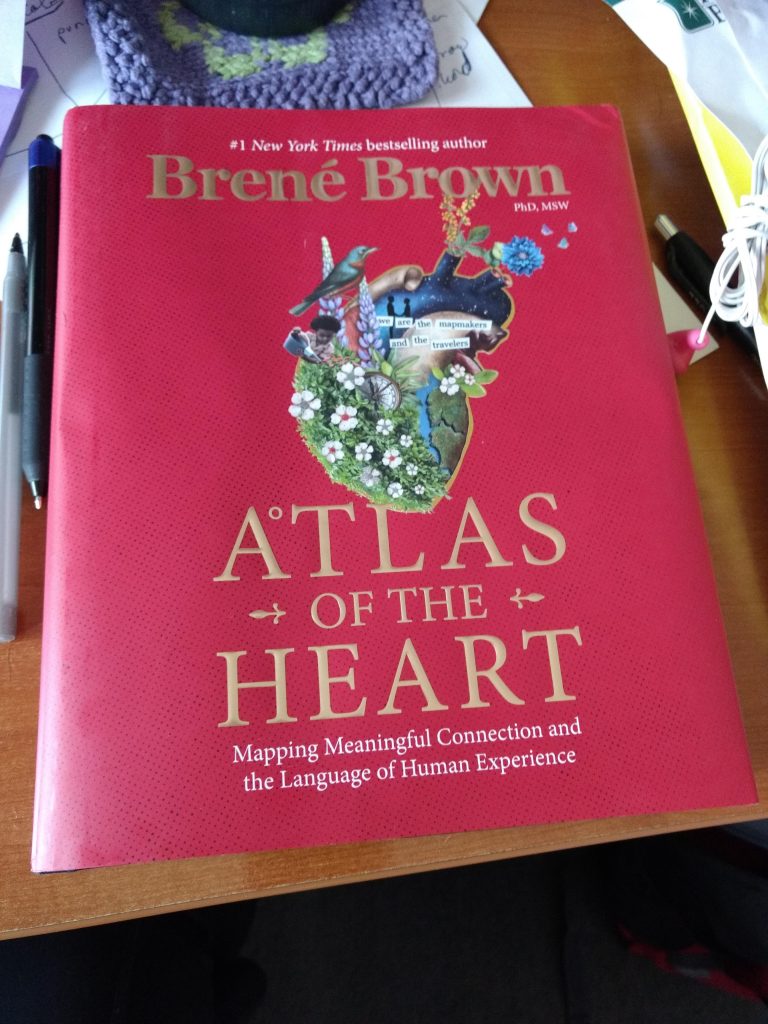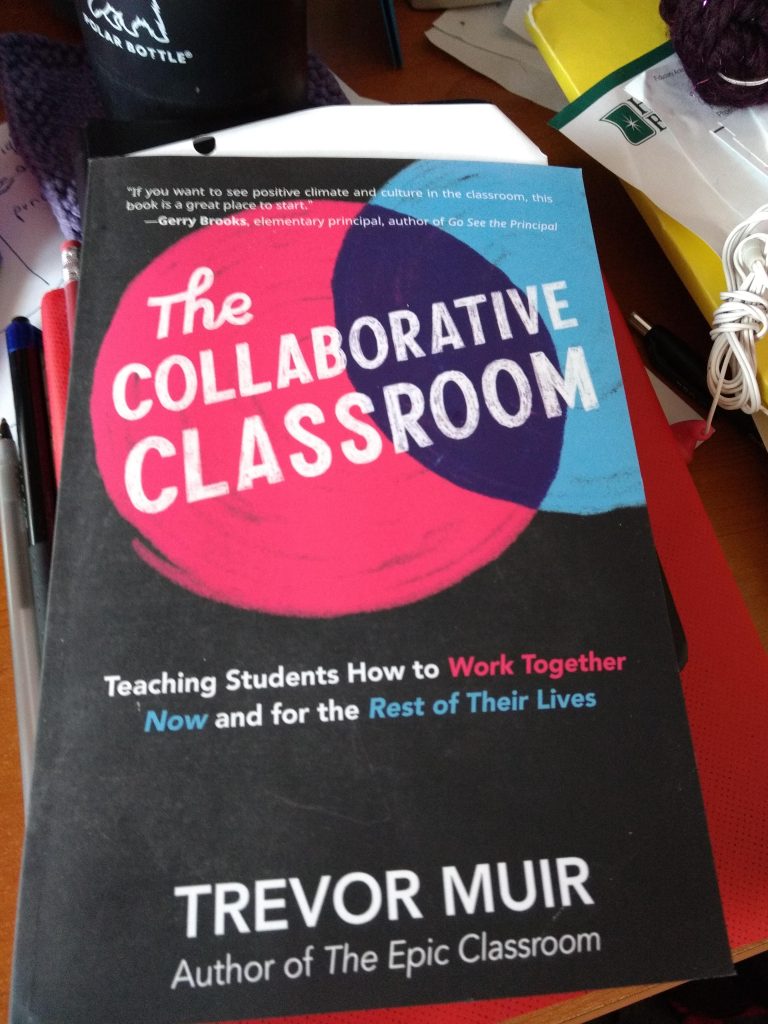I just finished the second book on my sabbatical list—the first teaching book on the list. Thinking about what I want to say about it on the blog is bringing up an issue I’ve been dealing with since I have started working for Bloom, the independent, progressive school I’ve been involved with for a few years.
On the one hand, I want to learn about how Bloom does things. It’s the first school I have been a part of that fits my ideals and fulfills its ideals in so many ways. So I’m open to learning new things; that’s the goal.
On the other hand, I find myself defensive. I notice myself asking: what’s wrong with how I’ve been teaching all these years?
My resistance would first pop up when I was planning with the 6th-10th grade teacher. At times I’d have an idea of what I wanted to do and she’d suggest other ways of achieving the goal. She would always tell me her suggestions are just that—suggestions—and I took them because I wanted to learn.
When I asked myself why she was teaching in ways I hadn’t even considered, I told myself that she knows this grade level better than I do (I teach college freshmen for my full-time gig) or that she’s an artist and super-creative so that’s why she had these ideas. She also teaches a variety of subjects and I teach English; we may teach differently because of this too. These three things are certainly true, but I didn’t know if those were the only reasons she teaches using different activities than I do.
It is with this split mindset—the openness of wanting to learn vs the defensiveness of wanting to protect my teaching or at least protect my teacher-ego—that I come to the book The Power of Making Thinking Visible by Ron Ritchhart and Mark Church.

I purchased the book because two of the Bloom teachers recommended it.
The bulk of the book consists of different activities to help kids do one of three things:
- connect with classmates (learn together),
- connect with ideas (such as concepts and ways of thinking), and
- put their thinking into action (as in what’s next now that I’ve figured out this thing?).
The activities are well-thought-out, and creative (ex: they use metaphors and break thinking down into smaller parts). The book also offers lots of explanation and examples. I particularly appreciated this when reading about the activities I have used at Bloom while only having a cursory explanation of them.
I’m saying the book was good, but now that I’m at the end of it, I am also saying, what is so important about making thinking visible? Like, I have been teaching forever and my college students think just fine—don’t they? My students make their thinking visible in writing. (I teach English Composition). Isn’t this enough?

Before I move onto reading the next book on the list, I want to look back at this one and see if I can understand why making thinking visible is so doggone important to these people (mainly the writers and to Bloom). Maybe I am missing something.
When reviewing the foreword, I got most of my answers. One of the main goals of The Power of Making Thinking Visible is to create a culture of thinking in the classroom. The activities in the book are meant to stimulate deeper learning and higher engagement.
The activities are meant to be used in different disciplines and to be simple so that kids remember to use them. A video I watched about Project Zero, which is an organization the authors are in, emphasized that teachers should refrain from trying to do everything in the book, but rather use a few activities over and over. This way kids will learn in what types of situations they could use each strategy. This makes sense; teachers are often talking about how student learning in one class doesn’t always transfer to another. For example, students may learn about how to construct a strong introduction in English class but struggle when writing an intro in a paper for psychology.
I understand the power of developing a certain culture in class. I’ve focused on creating a connected, empathic class where students support each other. It’s been hard, but once the culture is established, it’s easier for me to prompt students to do things that would support others. I only see students twice a week for an hour and 15 minutes at a time, so it’s challenging to develop this culture. Teaching compassion and empathy is so important to me that little movement towards a supportive culture in class is worth it.
I want students to also be strong thinkers too. I’m not sure if I articulate this without being in the context of a discussion or writing activity. I try to model thinking about daily issues in depth even when not working on course material. For example, if we’re in between activities and students bring up a YouTuber they’ve been watching or something they’re struggling with in another class, I ask questions to help them see things differently. I don’t typically tell students I want them to always be thinking though.
Maybe one of the goals of making thinking visible is simply to make something that is often ethereal more concrete. It’s helpful for lots of students to write or draw or chart their thoughts. In terms of English composition, it helps people know what to write about. Other students can do the thinking work right in their heads. They write well without needing to put thoughts on paper beforehand. If I wanted these students to make their thinking visible, then, it’d be so I could see it or to help other students since they themselves don’t need it to write well.
I think the main problemsthis book solves, then are:
- Classes where kids just do things and don’t think about them deeply.
- Times when kids know a strategy but don’t use it in a situation other than where they learned it. In other words, they don’t use the learning beyond that particular class or beyond school.
I’m glad I looked back at the goals of the book. I have a better understanding of why the authors see certain aspects of teaching as especially important. I don’t disagree with them. I think I’ll have to use more of the activities to see if they work in ways my other activities don’t. I’ll also put the thought about creating a “thinking culture” in my classes in the back of my mind to see if other ideas about doing this pop up. Surely having a compassionate and thoughtful culture can go hand in hand.
Along with finishing The Power of Making Thinking Visible, I finished John Spencer’s online course Project Based Learning. My sabbatical is titled “Using Project Based Learning to Increase Student Motivation and Achievement” so the material should be pretty important for my plan. I didn’t have as strong a response or as many questions about that material so far, which is why I’m not writing about it in depth on the blog right now. I’ll likely have some more thoughts as I use the materials in the future.
For my next book, I was thinking of picking up Brene Brown’s Atlas of the Heart, which I received as a gift from a Bloom teacher or Trevor Muir’s The Collaborative Classroom which I think was recommended by a Bloom board member. Brown’s book feels more personal and Muir’s more academic, so I could start them both.


Peace Out (and In),
Julie


5 COMMENTS
Anne
3 years agoLoved this review of the book you just finished Julie. I especially liked the understanding of teaching a few activities and letting the students master those and not trying to do all of the activities offered in the book.
In being with my 18 month old granddaughter, I noticed how often she wants to do the same things over and over again. I am able to spend the time with her to do this-watching her pick up a rock and then moving to a space where she can throw it safely, over and over, or helping her step over a ledge with two levels on it, over and over.
She is so intent and energetic. I wonder if this is how we all learn naturally anyway. I can certainly see how she will be able to apply the concepts of these two activities in other areas as she grows.
Thanks for sharing Julie. Really enjoyed reading it!
Julie
3 years ago AUTHORAnne, You’re showing me a new way to think about what kids do. I usually just think that young kids are just cute, and they are boring when they do the same things over and over. However, if it were my kid/grandkid, I’m guessing things would be much more interesting.
Thinking about how young children’s behavior could tell us about our natural ways of learning is also really interesting.
Thank you for sharing!
Joan
3 years agoHi Julie. Sounds like your goal to nurture a compassionate, empathic classroom culture aligns with the authors’ goal to empower and engage learners through metacognitive (?) strategies.
Julie
3 years ago AUTHORI hadn’t thought of that Joan! I think I see your point~nurturing a compassionate, empathic class culture focuses on the people themselves, as does empowering and engaging learners. Is that the connection you were making?
Also, I’m glad you brought up the word metacognition. I guess teh authors are asking kids to think about their thinking. Why else would one have to “see” their thinking than to better understand it. You may hold the key to this book–I just hadn’t thought of it like that.
Thanks!!
Julie
Joan
3 years agoYes! that’s the connection I was making. Thanks for your feedback 🙂